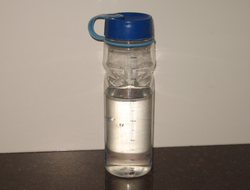Water: Here's to your health
Published: May 15, 2020
Water is an essential nutrient and comprises 60% of your body. You can consume water in its unadulterated state and as various beverages.
In addition, nearly all foods contain some water.
Water performs many jobs in your body. In addition to the obvious one of quenching your thirst water also:
- helps in regulating your body temperature
- is required for metabolic reactions often as a solvent for various compounds
- transports nutrients and wastes through the body
- helps in digestion and aids in relieving constipation
- acts as a lubricant for joints and eyes
- helps maintain blood volume
If you do not consume enough fluids you will deprive your body of essential water and become dehydrated.
There are a range of symptoms associated with dehydration which vary according to how dehydrated you are.
Thirst is usually the first sign of dehydration, but headaches, for no apparent reason, and fatigue are also associated with dehydration.
As you become more dehydrated symptoms become more severe and if you do not rehydrate you may end up in a state of delirium and collapse.
In the extreme, dehydration can be fatal.
Dehydration can be very subtle and gradually worsens over a period of time. You may be marginally dehydrated and not notice it, but dehydration could be affecting your body's ability to perform its tasks.
When you feel thirsty you should refresh your thirst, preferably with water, as soon as you can. We often get accustomed to being a little thirsty and some physiological conditions may mean that a person does not recognise thirst.
Keeping your body adequately hydrated on a regular basis, and making sure you drink extra fluids when you exercise and/or when you are in a warm environment will help to ensure that you maintain adequate hydration levels.
If you are consuming enough fluid your urine will be a pale yellow colour.
You need between 2.2 L - 3 L of fluid per day. That is about 9 -13 x 250ml cups of fluid per day.
Pregnant and lactating women require more fluid each day than non pregnant and non lactating women.
You may require more fluids if you are very active and/or if you tend to sweat a lot. Water is the best rehydrating beverage. It is calorie and additive free.
Beverages to be cautious about include coffee (more than three cups per day), some sodas and alcohol as these have a diuretic effect.
That is, these drinks while they contain water increase the rate at which you excrete fluid in your urine.
Fruit juice and pop sweetened with sugar increase your caloric intake and are best limited.
If you're not sure how much fluid you are consuming record each beverage you have during the course of the day. You should include the size of the beverage.
If you find that you are not consuming enough fluid the best plan of action is to increase your water consumption gradually.
Start with adding 1 cup of water each day and gradually increase this amount until you reach your goal. Record the number of cups of water and other beverages you have each day.
What if you don't like water? There are various strategies to make consuming water more palatable, but you may want to consider why it is that you don't like water as a drink.
May be cold water doesn't appeal to you or you like ice cold water which isn't usually available to you.
Very often strategies can be found to help you overcome your "dislike" of water. Using a special glass or water bottle and refilling it throughout the day may be enough to make drinking water more enticing.
Read more about the nutritional importance of water in the in-depth article: Water: Are you getting enough?
References
1.
Whitney, E. & Rady Rolfes, S. (2005). Understanding Nutrition. Belmont, CA: Thomson Wadsworth
3.
CSEP (2009). Are your clients drinking enough fluid?


